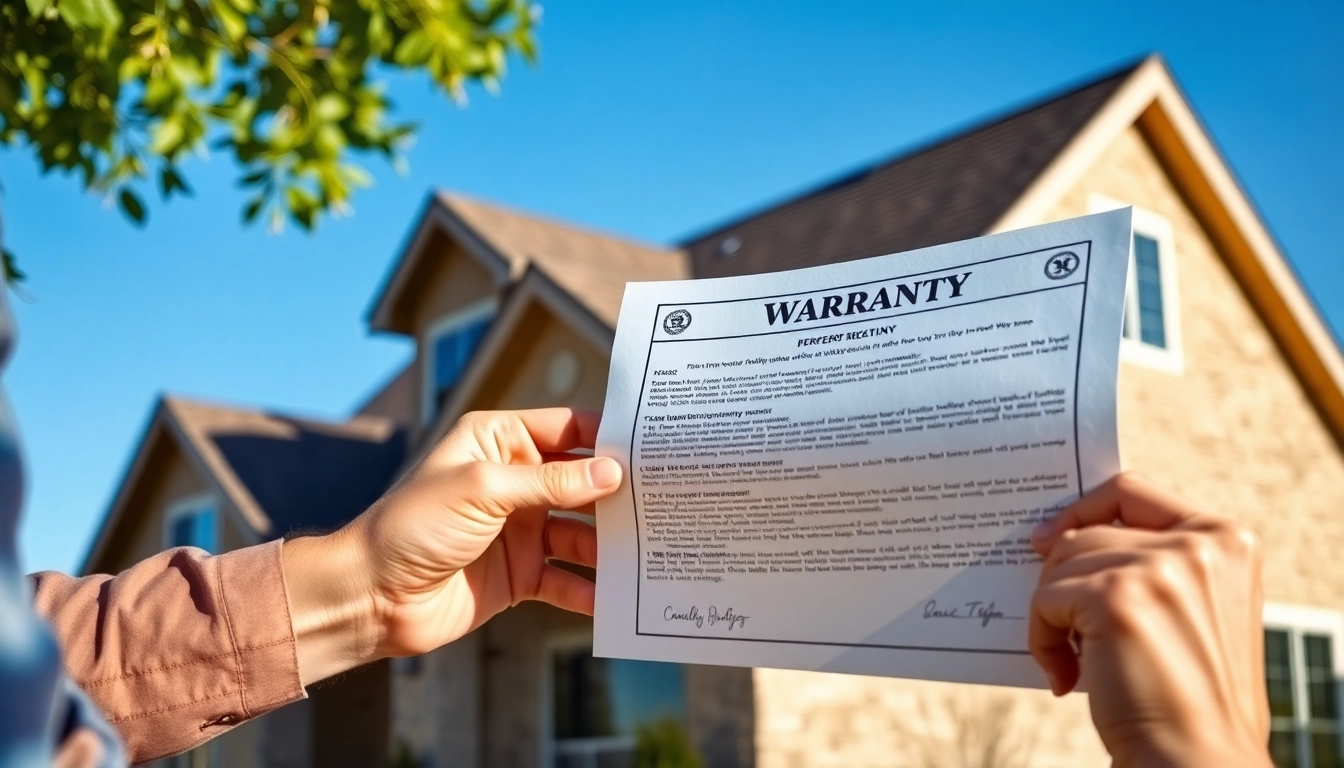Introduction to Roof Warranties in Central Texas
When investing in a new roof, understanding the roof warranty Central Texas is essential for homeowners. A roof warranty provides crucial protection against manufacturing defects and poor workmanship, ensuring that if something goes wrong, you won’t shoulder the financial burden alone. As Central Texas experiences diverse weather conditions—from intense heat to heavy rain—having a reliable roof warranty becomes not just a smart investment, but a necessary one.
What is a Roof Warranty?
A roof warranty is a guarantee provided by either roofing manufacturers or contractors to homeowners, covering specific problems that may arise with your roof. These warranties can vary significantly in terms of coverage, duration, and exclusions. While they’re meant to cushion homeowners from unexpected costs related to roofing failures, it’s vital to understand the scope of what is covered and for how long. In essence, a roof warranty is an assurance that the roof will perform satisfactorily under specified conditions over a certain time period.
Importance of Roof Warranties for Homeowners
For homeowners, a roof warranty offers peace of mind. Given the potential expenses associated with roof repair or replacement, having a warranty can mean the difference between financial hardship and relief. It ensures that if defects arise due to the materials or the way the roof was installed, the homeowner can seek recourse without extra out-of-pocket costs. Additionally, a good warranty can enhance property value, as potential buyers will view a home with a robust roof warranty as a lower risk investment.
Types of Roof Warranties Offered
Roof warranties generally fall into two main categories: manufacturer warranties and workmanship warranties. Manufacturer warranties typically cover defects in roofing materials, while workmanship warranties cover issues that arise due to installation errors. Understanding the various types will help you decide what protection is best for your situation. Some manufacturers even offer extended warranties for specific types of installations, which can be beneficial for high-end roofing materials.
Key Features of Roof Warranties
Workmanship vs. Material Warranties
Workmanship warranties and material warranties serve different purposes. Material warranties cover defects in the roofing materials themselves—such as premature wear, leaks, or damage due to manufacturing faults. These warranties typically last between 20 to 30 years, depending on the manufacturer and type of material. On the other hand, workmanship warranties protect homeowners against poor installation practices, which can jeopardize the integrity of the roof. These warranties often range from 1 to 10 years. Knowing the distinction can help you tailor your warranty coverage to your needs.
Typical Coverage Duration in Texas
In Texas, the duration of roof warranties can vary considerably. Most warranties have a lifespan of 5 to 30 years, with some extended options available for premium products. For instance, manufacturers may offer a limited lifetime warranty on high-end roofing materials, which can give homeowners an added sense of security. However, understanding the applicability of such an extended warranty—like maintenance responsibilities or eligibility criteria—is crucial.
Common Exclusions in Roof Warranties
While roof warranties offer substantial protection, they often include notable exclusions. Common exclusions can involve damage resulting from natural disasters, improper maintenance, and alterations made to the roof after installation. Therefore, it is critical to read the fine print carefully to recognize what is not covered. Additionally, most warranties may not cover damage due to factors like extreme weather events, which are relatively common in Central Texas.
How to Select the Right Warranty for Your Roof
Assessing Your Roofing Needs
Every homeowner has unique roofing needs influenced by factors such as the local climate, roof type, and personal budget. Evaluating these factors can help in selecting the most appropriate warranty. For example, if you live in a storm-prone area, opting for a material that offers extended warranty coverage may provide additional peace of mind. Conducting a thorough assessment of your home’s roofing needs can guide you towards a warranty that aligns with those requirements.
Questions to Ask Your Contractor
When discussing roofing options with contractors, asking the right questions can help clarify warranty details. Inquire about the specific coverage included, how long it lasts, and what conditions could void it. Furthermore, understanding the contractor’s experience with claiming warranties is critical; it’s often the contractor who will need to handle warranty claims on your behalf. A professional contractor should be willing and able to explain the warranty process clearly.
Reading and Understanding Warranty Fine Print
The fine print of a warranty can often feel daunting, but it’s essential to read and understand it thoroughly. Look for sections detailing the coverage, duration, exclusions, and the process for filing a claim. If necessary, don’t hesitate to seek clarification from your contractor or the warranty provider. Getting a good grasp of the terms can avoid pitfalls down the line and ensure you know exactly what you’re covered for.
Comparing Warranty Options from Different Providers
Popular Roofing Companies in Central Texas
Central Texas is home to several reputable roofing companies, each offering distinct warranty options. Some of the popular companies include Schulte Roofing, Caden Roofing, and Action Roofing & Construction. These companies typically provide a range of warranties that cater to various budget and material considerations. Researching each provider’s warranty options, customer service, and reliability can help inform a well-rounded decision.
Evaluating Warranties Based on Customer Reviews
Customer reviews can offer invaluable insights into the reliability of a roofing warranty. Look for feedback regarding how claims have been managed and customer experiences with the warranty service. High-quality reviews often highlight factors such as promptness, ease of filing claims, and satisfaction with resolutions. These evaluations will help provide a clearer picture of the actual performance of the warranties you are considering.
Price vs. Coverage: Finding Value
While price is an important factor, it should not be the only consideration in selecting a roof warranty. The coverage provided must also match your specific needs. A less expensive warranty with significant exclusions may not offer the protection you require. Conversely, a high-priced warranty could provide coverage that exceeds what you may actually need. A balanced approach, focusing on value rather than merely cost, will help ensure that you choose a warranty that aptly protects your investment.
Maintaining Roof Warranty Validity
Regular Inspections and Maintenance Tips
To maintain the validity of your roof warranty, regular inspections and maintenance are paramount. These can include routine checks for damage due to weather events, debris collection, and moss or algae buildup, which can negatively affect performance. Homeowners should schedule inspections at least once a year, if not more frequently, especially after extreme weather. Documenting these inspections is crucial; it can serve as proof of diligence should you ever need to file a warranty claim.
Documenting Repairs and Modifications
If any repairs or changes are made to your roof—whether routine maintenance or major fixes—documenting those modifications is essential. Keeping records and receipts not only helps maintain warranty validity but is also critical when filing claims. Most warranties dictate that any unauthorized changes can lead to a voiding of the warranty, hence tracking every aspect of your roof’s care is part of responsible homeownership.
Steps to Take When Filing a Warranty Claim
Should you need to file a warranty claim, follow these steps:
1. Review Your Warranty: Understand the terms and conditions relevant to your claim.
2. Gather Documentation: Compile photos, receipts, and maintenance records to support your claim.
3. Contact Your Contractor: Inform them about the defect and discuss how to proceed.
4. Follow Up: Ensure your claim is submitted and keep a record of all communications.
Filing a claim might seem overwhelming, but a systematic approach can simplify the process and help ensure you receive the service needed.



